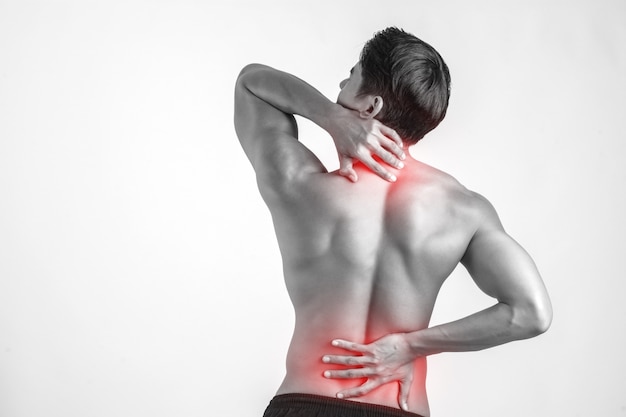We often fall prey to pain and discomfort caused by an excessively sedentary yet hectic lifestyle, injuries from physical activities like exercising, minor accidents, or merely wrong postures.
Experiencing back pain is a common complaint among many in the country. It refers to any discomfort that occurs in any part of the back. It can range from a muscle twitch or swelling or tingling sensation when tried to be moved to a burning, shooting, or stabbing sensation gradually spreading across the body.
The real trouble begins when the pain does not heal with days of rest, and even worse when it radiates down the legs or becomes even more severe when we try to bend, move, walk, run, or do anything involving the lower body. It is then referred to as lower back pain (LBP). Men and women are equally prone to experiencing LBP, and it has been scientifically proven to be the most common reason for physician visits regarding backaches. Almost 60%–80% of adults experience LBP at some point in their lives.
Leading Causes of Severe LBP
- Strain in muscles or ligaments experienced while lifting heavier weights repeatedly (deadlifts, strength training exercises, lifting heavier dumbbells) with an incorrect posture (slouched or rounded back). Those new to physical activity or irregular workouts during the week can experience a sudden awkward movement that causes a strain in the lower back muscles and spinal ligaments. Sometimes, even heavily pregnant women can experience lower back pain due to the pressure on the pelvic muscles due to the developing fetus. Scoliosis is a term given to cases of a curved, ‘C’ shaped spine that may form due to incorrect posture, growth, and developmental errors in children, or even improper fetal development (congenital scoliosis). These cases also may need surgical interference, even without any pain in the lower back.
- Damaged or ruptured (herniated) spinal discs that are meant to act as cushions between spinal vertebrae (bones of the spine). The jelly-like filling inside a disc can bulge or rupture and press on a nerve. One such nerve is the sciatic nerve, which causes pain to run from the buttock down one of the legs. This condition is known as sciatica. Another common condition for medical intervention in India is the slipped disc or herniated disc. It happens when an injury or weakness or even incorrect posture causes the inner gelatinous portion of the disc to come out through the outer ring. It is one of the most common causes of surgeries if medical intervention does not work.
- Osteoarthritis causes bone overgrowth at times. It can affect the entire spine and cause lower back issues. In severe cases, it causes spinal stenosis, which refers to narrowing the spaces between bones in the spine. This, in turn, puts pressure on the spinal cord and affects the nerves that cause pain, sometimes more severe than imaginable. India records more than one million cases of spinal stenosis every year.
- Osteoporosis is a condition where the bones become brittle due to either age, nutritional deficiency or abuse, existing comorbidities that cause people to become sedentary, or a combination of these factors. The tissues stop making new bones, and there is an eventual loss of bone density. It may cause people to hurt their lower backs while performing daily chores, exercise, or even basic movements like walking. Spondylosis caused by old age and gradual wear and tear of spinal tissues and bones is another common experience, with more than 10 million Indians getting affected every year.
Such signs lead us to medical practitioners and pain specialists for primary medical treatment involving drugs and physical activities, physiotherapy, or spinal injections. However, most severe cases need surgical intervention from the best orthopedic surgeon, a neurosurgeon, or both.
Common Surgical Procedures for LBP
1. Discectomy
It involves removing the protruding (herniated) spinal disc to relieve any pain, irritation, or inflammation of the nerves. The surgeon removes either a part of or the complete lamina of a vertebra (the back surface of the vertebral column) to access the ruptured disc cushioning the spinal cord. A minimally invasive version of this surgery, called Microdiscectomy, is used to treat conditions like sciatica, where a particular nerve is known to be affected.
2. Laminectomy
It is commonly used to treat spinal stenosis. The surgeon makes an incision on the back of the spine to remove the bony plate of the back of the vertebra or bone spurs that create pressure on the nerves running along the lower back.
3. Spinal fusion
This process is used to fuse two or more bones in the spine. It addresses cases of spinal instability due to fractures, injuries, scoliosis, degenerated discs, or a combination of all.
4. Artificial disc replacement
The process of inserting artificial discs is relatively new with limited applications. They are inserted as alternatives to spinal fusion surgeries or to alleviate pain caused by an injured disc.
5. Vertebroplasty and kyphoplasty
These procedures involve injecting a bone-holding or bone-binding material with glue-like consistency that hardens and strengthens the bone. These are usually used for treating osteoporosis.
Before opting for surgery, a person should carefully compare the odds of success and alternative therapies for pain relief from Coimbatore Ortho Hospital



